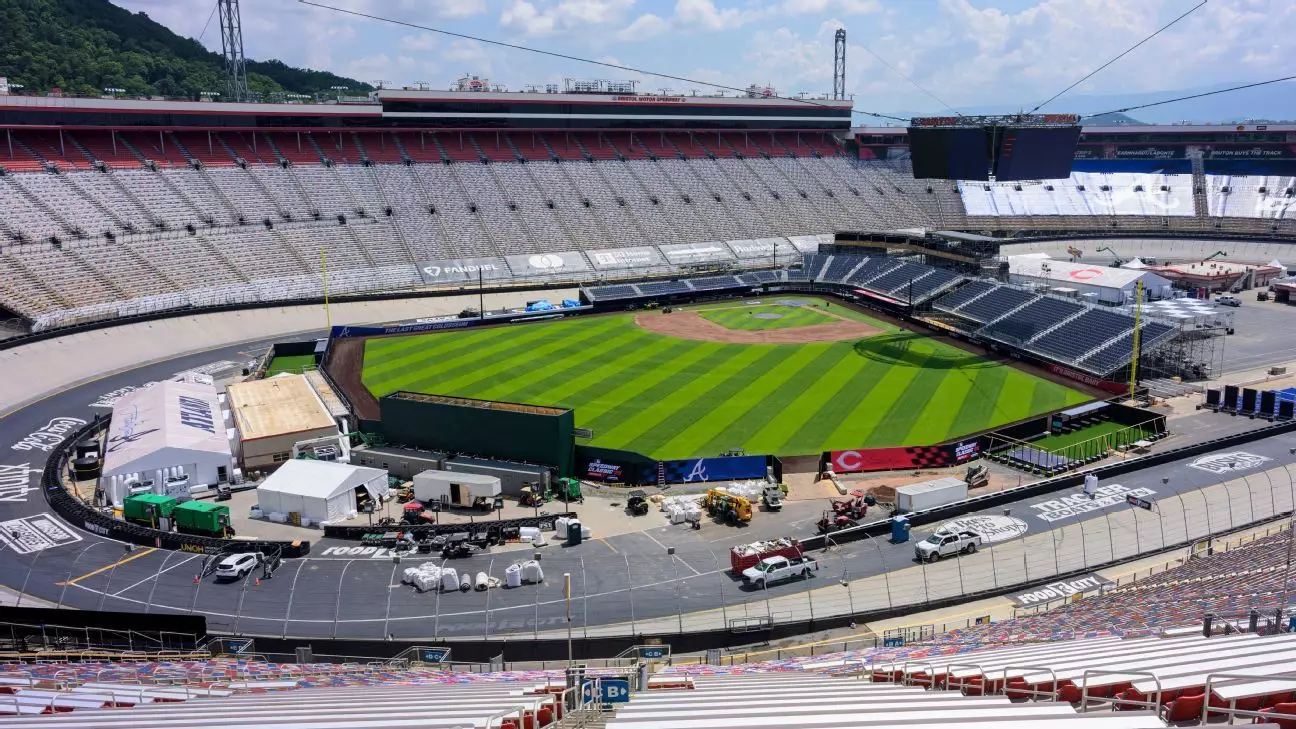Bristol Motor Speedway stands as a monument to ambitious design and relentless adaptability. Historically recognized for its roaring NASCAR races, the track has boldly expanded its identity by hosting Major League Baseball’s first regular-season game in Tennessee. This extraordinary event shattered attendance records, drawing over 91,000 enthusiastic fans and showcasing Bristol’s unique capacity to pivot between worlds. Yet, this achievement is more than a fleeting spectacle; it embodies a daring commitment to redefining the possibilities of sports venues.
The transition from a baseball diamond back to a racetrack isn’t merely logistical—it’s emblematic of a larger philosophy. In an era where venues must continually reinvent themselves to stay relevant, Bristol has demonstrated that with enough ingenuity and resourcefulness, a single location can serve multiple pioneering purposes. This effort is driven by a clear understanding that success depends not just on infrastructure but on visionary planning and resilience.
Engineering Innovation: The Challenge of Rapid Transformation
Converting a baseball field into a motorsports arena in record time presents staggering engineering and logistical challenges. The process involves dismantling finely tuned baseball infrastructure—grandstands, broadcast booths, and synthetic surfaces—and replacing them with a racing setup that demands precision and durability. Utilizing 17,500 tons of gravel and 340 tons of Pennsylvania clay, the team meticulously prepared the infield to ensure a level, professional racing surface. Pouring and curing concrete walls adds layers of complexity, requiring patience and exactitude to uphold safety standards for high-speed competitions.
What’s remarkable is the atmosphere of relentless urgency; teams work through nights, tearing down and rebuilding with exceptional coordination. The skeletal framework of the venue is being reshaped swiftly to meet tight deadlines, all while ensuring quality and safety are never compromised. The entire operation exemplifies the ingenuity characteristic of modern sports infrastructure projects—balancing rapid turnaround with meticulous attention to detail.
Community and Legacy: More Than Just a Game
Beyond the technical feats, what truly elevates this project is its social impact. Materials salvaged from the renovation—wooden grandstand parts, gravel, and other resources—are being repurposed to aid recovery efforts for communities affected by natural disasters like Hurricane Helene. This approach transforms the venue into a conduit of communal support, turning transient sports infrastructure into a lasting force for good within the local area.
Bristol’s capacity to host diverse events, from college football to potential NHL exhibitions, speaks to its versatility. Its history as a hub of sporting excellence is now intertwined with a broader mission of community engagement and innovation. The venue’s ability to adapt signifies more than a physical transformation; it’s a statement of resilience and a desire to push the boundaries of what such venues can achieve in the future.
The Future of Bristol: Beyond Conventional Boundaries
Looking ahead, Bristol Motor Speedway isn’t content with resting on its laurels. The ongoing experiments—hosting baseball, contemplating NHL interest, and serving as a testing ground for large-scale events—highlight a bold vision for multi-dimensional utilization. This proactive stance signals a future where sports venues are not static but dynamic ecosystems capable of hosting a spectrum of entertainment and communal activities.
The boldness of Bristol’s operators underlines a fundamental truth: the greatest venues are those that refuse to be confined within traditional boundaries. Their willingness to innovate, confront logistical challenges head-on, and contribute positively to society reflects a deep understanding that the future of entertainment and community engagement rests on adaptability and vision.
In a world where change is inevitable, Bristol Motor Speedway exemplifies how embracing transformation—no matter how complex—can lead to renewed purpose and extraordinary achievement. It’s a powerful reminder that true innovation often requires audacity, perseverance, and a relentless drive to redefine what a sports venue can be.

